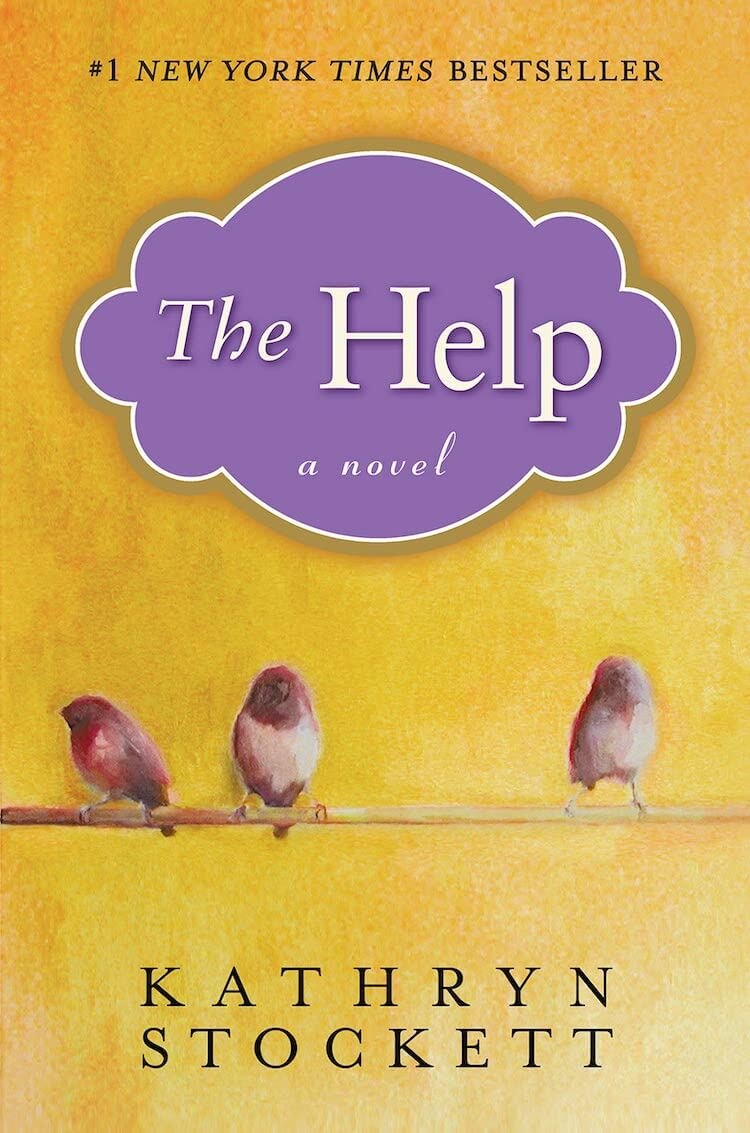Book Of The Month: The Help
This page may contain affiliate links. As an Amazon and Rewardstyle affiliate, we may earn a small commission for any purchases made through these links. Click here for the disclosure statement.
The Help has received much well-deserved attention and has been well-loved since its publication in 2009. If you haven’t read it yet, here is your sign to finally pick it up. This powerful piece of literature invites many questions surrounding the civil rights movement of the 1960s in America and explores the complications and idiosyncrasies of this tumultuous and tense time period between black and white people in the 1960s.
The Help
Originally Published: 2009
Pages: 476
Available on: Kindle, Paperback, Audiobook
GET YOUR COPY HERE
Try a free trial of Audible Plus here!
This important and delicate topic is tackled respectfully and humbly by the author, Kathryn Stockett, whose novel poses questions, as opposed to blatantly handing out condemnation and criticism in a situation, time, and place where such judgment is certainly warranted and accepted. The Help’s perspective opens the door to the novel idea that a world of hurt, pain, suppression, hatred, shame, guilt, and envy, can exist simultaneously with love, pride, and loyalty—both the terrible truths and the unexpected good that arises between two “types” of peoples. How could such dirty, shameful treatment co-exist with fierce attachment?
The following quote summarizes what Stockett hoped to unearth with The Help:
““Everyone knows how we white people feel, the glorified Mammy figure who dedicates her whole life to a white family. Margaret Mitchell covered that. But no one ever asked Mammy how she felt about it.” ”
In the southern states of 1960s’ America, racial oppression remained strong and supported, despite federal policy. The Help hones in on a particular sector of this ongoing social, political, and humane struggle over civil rights and freedom, particularly the relationship between Black maids and their white female employers. In Jackson, Mississippi, there exists two worlds: the privileged white women who spend their time at social events and their hired help in their well-to-do households, treated with careless disregard, if not worse. Stockett goes beyond what could be expected from such a novel, finding both the terrible and the enlightening in this complicated dynamic.
““....I realized I actually had a choice in what I could believe.”
”
Aibileen has cared for 17 white children in her hard-working, bone-weary life—losing her own boy along the way—and kept her mouth shut and back bent over in labor for many white households since she was a mere girl. A maternal and wise figure, Aibileen has loved those children like her own—that is, until they grow old enough that their colorblind eyes begin to see her, their ‘colored maid,’ through the racist lens that was still prominent in Jackson.
““I want to yell so loud that Baby Girl can hear me that dirty ain’t a color, disease ain’t the Negro side a town. I want to stop that moment from coming - and it come in ever white child’s life - when they start to think that colored folks ain’t as good as whites. ... I pray that wasn’t her moment, Pray I still got time.” ”
Minny, hot-blooded and smart-mouthed, is constantly losing positions due to her quick temper until finally she lands a position in a household that certainly hasn’t been like any other. With a litter of children and an abusive husband at home, her understanding of life is not an optimistic one.
Eugenia "Skeeter" Phelan, a young white woman who is determined to make her own way in the world instead of stepping into the expected role of the stereotypical Southern belle, has her eye set on becoming a writer. She has led a sheltered, privileged life, but is not blinded by the same racial prejudice that the rest of the community supports.
Together, these three women write a book describing the daily lives of Black maids in white households in Jackson, Mississippi, interviewing many people, but maintaining anonymity due to the danger that this project could create.
““Who knew paper and ink could be so vicious?” ”
The three women, coming from distinctly and painfully different positions in society, unite over a common cause and work together to bring something shocking to the light of day: That the seemingly-solid barriers that separate two people are, in fact, falsified. They unearth this realization for themselves as they get to know one another, learn from each other’s lives and situations, finding sympathy and understanding in place of the resentment, shame, guilt, hatred, and every other of the millions of complicated negative feelings that become complicit within the relationship between white and Black women in American culture in the 1960’s.
““I used to believe in em (lines). I don’t anymore. They in our heads. Lines between black and white ain’t there neither. Some folks just made those up, long time ago. And that go for the white trash and the so-ciety ladies too.””
This meaningful book faces up with social, cultural, racial, and personal borders, exploring the reason and limitations of those borderlines. Stockett gracefully identifies the statutes and lines that are born, bred, and fed between people, and she gently breaks them down through the story and the conversations that take place. These so-called “boundaries” between different kinds of people are very real, and yet simultaneously, completely fictitious and arbitrary. It is wonderful and eye-opening to read how the book’s characters discover this for themselves:
““We are just two people. Not that much separates us. Not nearly as much as I’d thought.” ”
Putting aside race, The Help explores the relationship between women, how they treat one another, how every woman undergoes the same pains and problems—whether marital, health, or mental—no matter the color of their skin. Stockett goes into the nitty and gritty of women’s relationships: parts of it aren’t pretty, parts of it are distasteful and shameful and provocative, parts are awe-striking and heart-warming.
““Womens, they ain’t like men. A woman ain’t gone beat you with a stick. Miss Hilly wouldn’t pull no pistol on me. Miss Leefolt wouldn’t come burn my house down. No, white womens like to keep they hands clean. They got a shiny little set of tools they use, sharp as witches’ fingernails, tidy and laid out neat, like the picks on a dentist tray. They gone take they time with em.” ”
Kathryn Stockett takes a difficult position as a white author, but she does so in an incredibly open-minded, humble, and respectful manner, and that remains one of the greatest aspects of the book. She explores all aspects of the negative and positive ins and outs of the relationship between the “colored help” and their white female employers. It is sensitive, it is dangerous, and she walks a fine line that she openly admits to.
Read this quote from the author that exemplifies her stance on both her confidence and lack of confidence, in her taking on this challenge:
“My feelings for The Help conflict greatly. Regarding the lines between black and white women, I am afraid I have told too much. I was taught not to talk about such uncomfortable things, that is tacky, impolite, they might hear us.
I am afraid I have told too little. Not that life was so much worse for many black women working in the homes in Mississippi, but also that there was so much more love between white families and black domestics than I had the ink or the time to portray.
What I am sure is this: I don’t presume to think that I know what it really felt like to be a black woman in Mississippi, especially in the 1960s. I don’t think it is something any white woman on the other end of a black women’s paycheck could ever truly understand. But trying to understand is vital to our humanity.”
The Help is an incredibly well-written, powerful, and moving piece of literature that should be one everyone’s to-read list. Heart-warming, funny, and thought-provoking, it would be a great pick for a book club, or to read with friends or other fellow-readers, because it invites much conversation and reflection.
This novel certainly opens the platform for much discussion on race, cultural differences, cultural respect, and societal expectations.
To read more of Stockett’s insight on how she tackled this subject, read this interview.





